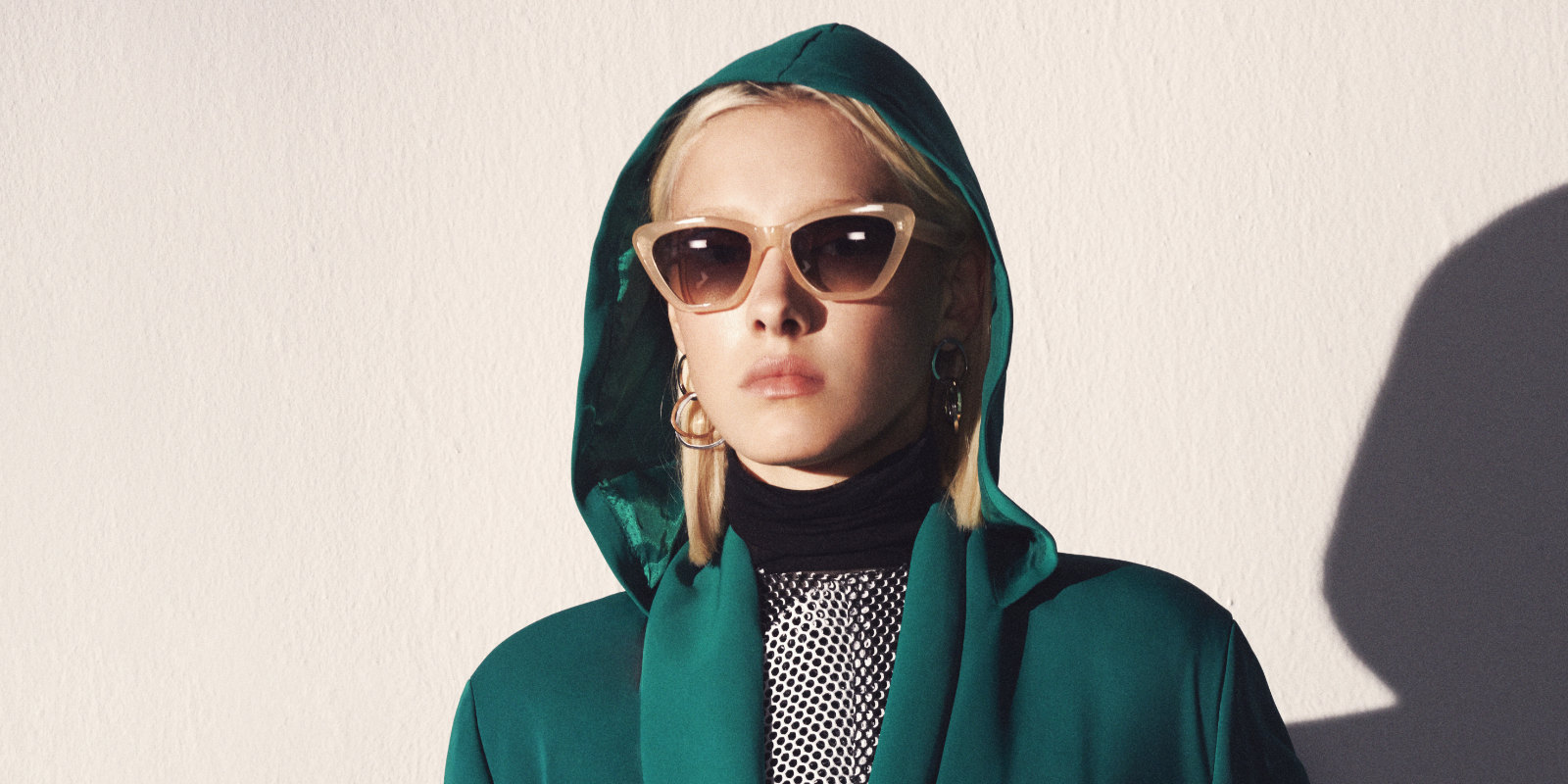
FASHION Based in Jeddah, Saudi designer Noora Alharthi, is best known for her stylish collections of women’s suits and jackets. Qurratulain Wahab met up with Noora to find out more
From the November 2019 issue of Lucire KSA
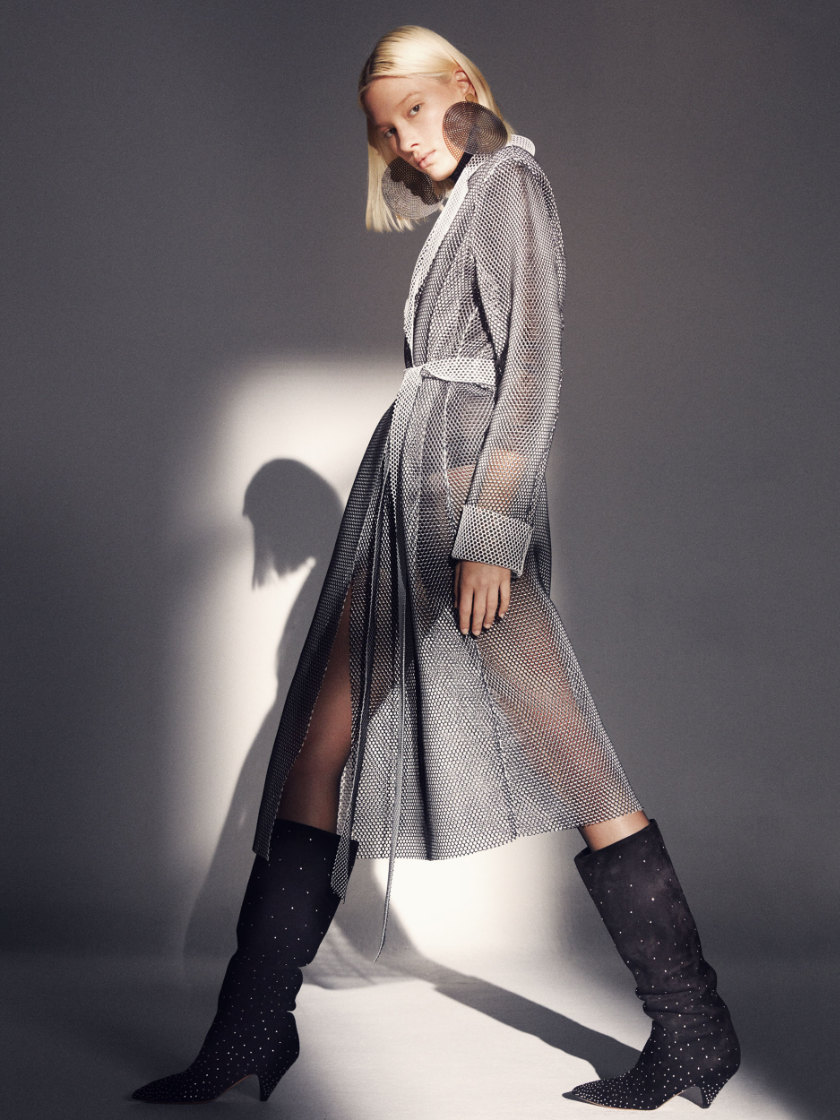
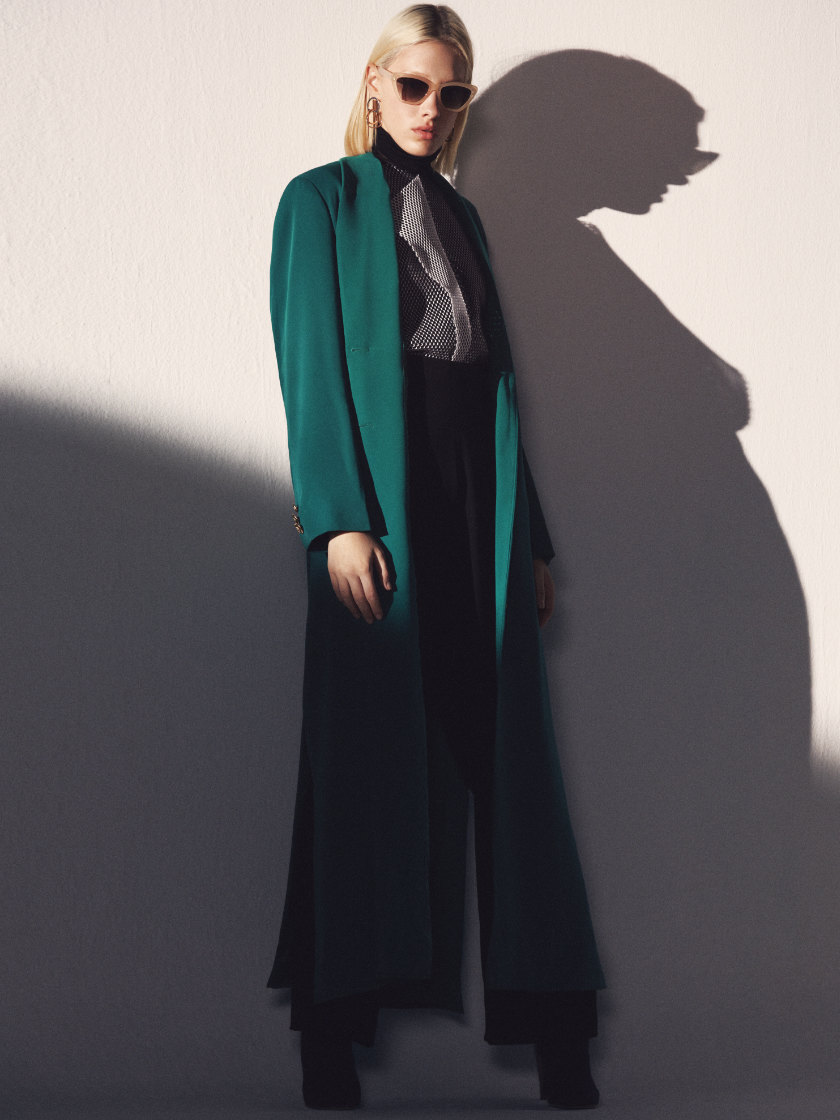
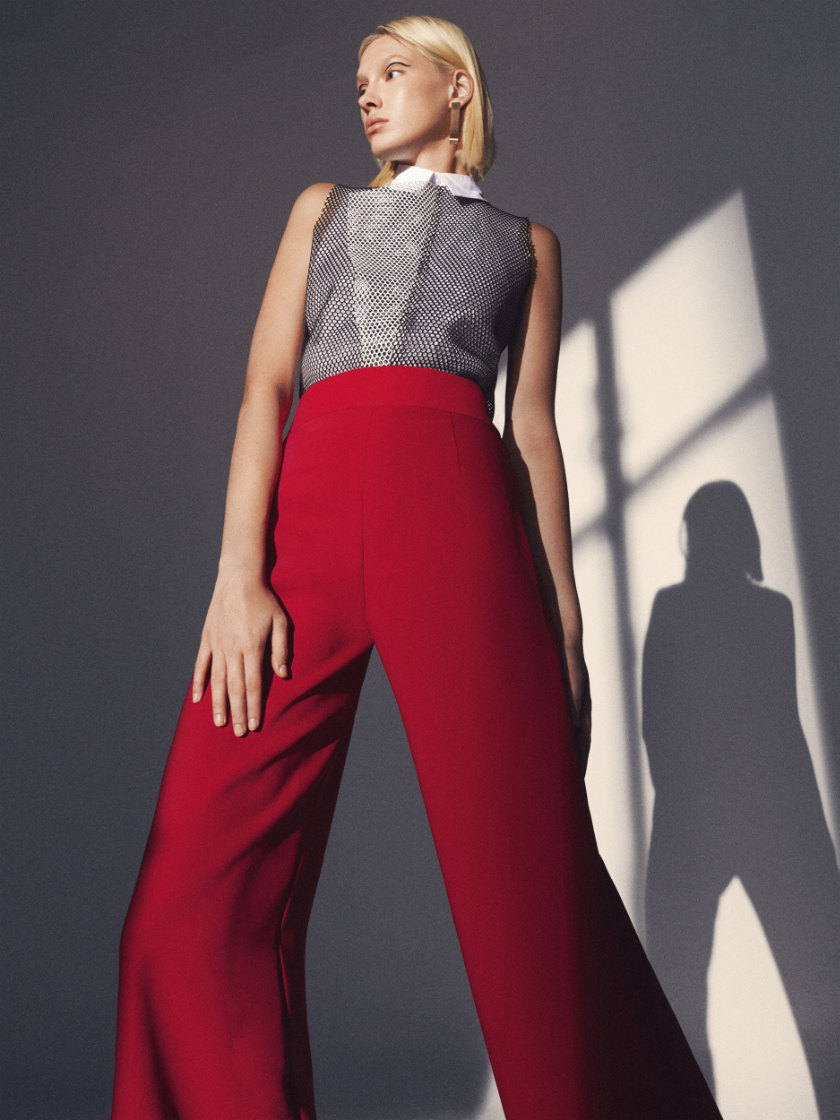 Colour and timelessness from Noora Alharthi’s spring–summer 2019 collection
Colour and timelessness from Noora Alharthi’s spring–summer 2019 collection
Qurratulain Wahab is editor of Lucire KSA.
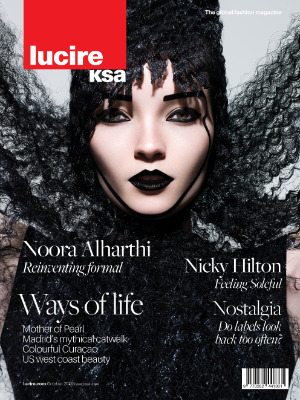 Noora Alharthi studied fashion design in the UK and it was there, exploring the shops in London’s iconic Savile Row, that she began to formulate the idea of reinventing formal wear for women, making it more contemporary, comfortable, and timeless. Today, her brand is all about high-quality materials, details, and tailoring.
Noora Alharthi studied fashion design in the UK and it was there, exploring the shops in London’s iconic Savile Row, that she began to formulate the idea of reinventing formal wear for women, making it more contemporary, comfortable, and timeless. Today, her brand is all about high-quality materials, details, and tailoring.
Lucire KSA: How did you become interested in fashion design?
Noora Alharthi: As a child, I liked drawing and calligraphy. Although I certainly had an artistic side, I can’t say I was really interested in fashion per se. After completing high school in Saudi Arabia, I wasn’t sure what I wanted to do. It was my father who suggested I study fashion design. I think fathers have an instinct when it comes to their children. He knew it would be a good career choice. I don’t know how but he just knew. I decided to give it a try and travelled to the uk to do a foundation year and then two years for a diploma in fashion design. After the diploma, I came back to Saudi Arabia and enrolled in Dar al-Hekma’s fashion design department in Jeddah. The department had just been set up and I was among the first students to enrol. Because I’d already done the diploma in the UK, I was able to stay a step ahead. I loved learning how to cut fabrics and patterns and how to use a sewing machine. I graduated from Dar al-Hekma in 2014.
When did you start to create your own designs?
My first design was a dress for a college project. It was a silver dress inspired by the 1950s. I did the sleeves, attached them to the dress and then added the hemming and the collar. As I pieced it together, I had no idea what the finished design would look like, but it turned out well. I still have it. It’s one of my favourite pieces.
When did you launch your brand?
After graduating from Dar al-Hekma, I took time to do the research and planning. I launched the brand in 2017. In the beginning, I was all over the place. I didn’t know what exactly I wanted to do. Growing up, I wasn’t like most other girls who were into dresses and frilly clothes. I always admired my father’s suits. In the UK, I would walk around London’s Savile Row to look at the suits. I wore suits myself and liked how I looked in them. I still do. They reflect my personality. That’s what made me sure I wanted to go with suits. The idea behind my designs is to redesign men’s clothing and make them wearable for women.
continued below
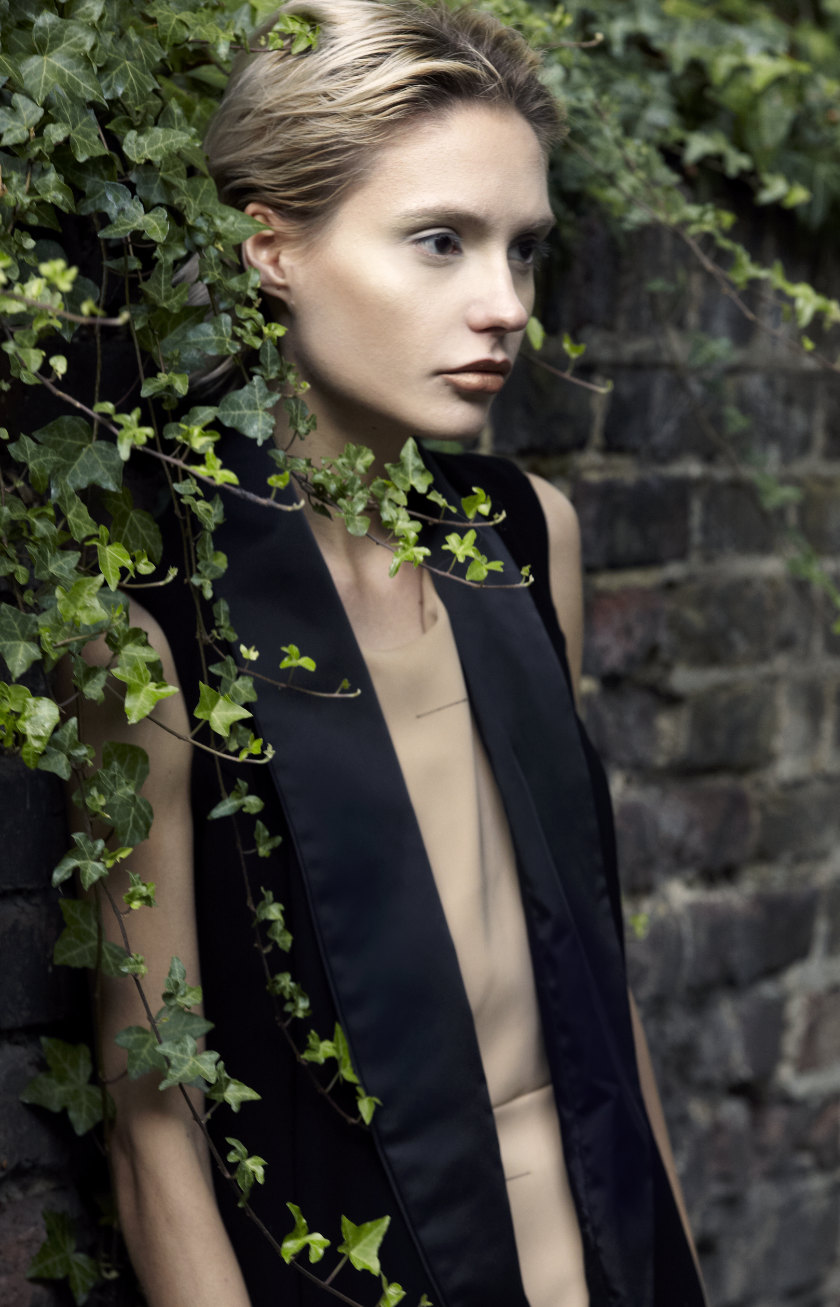
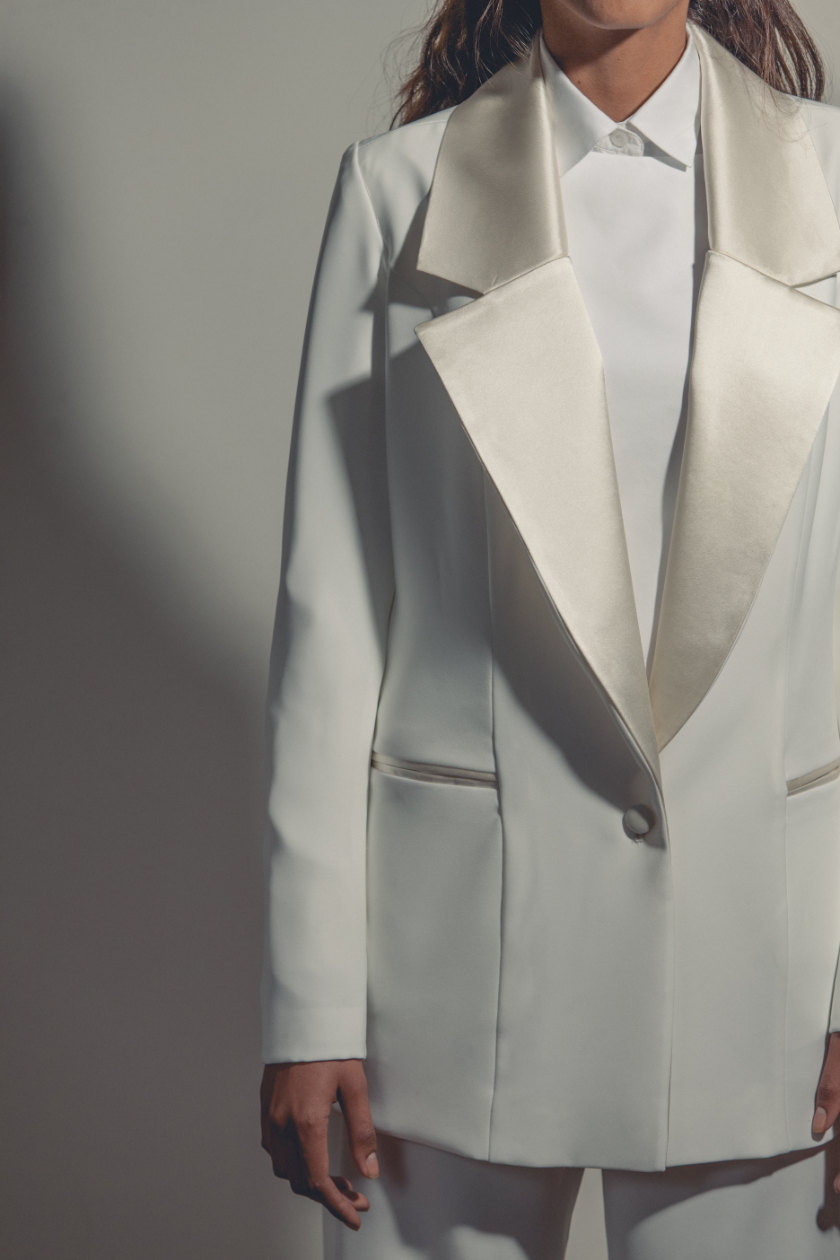
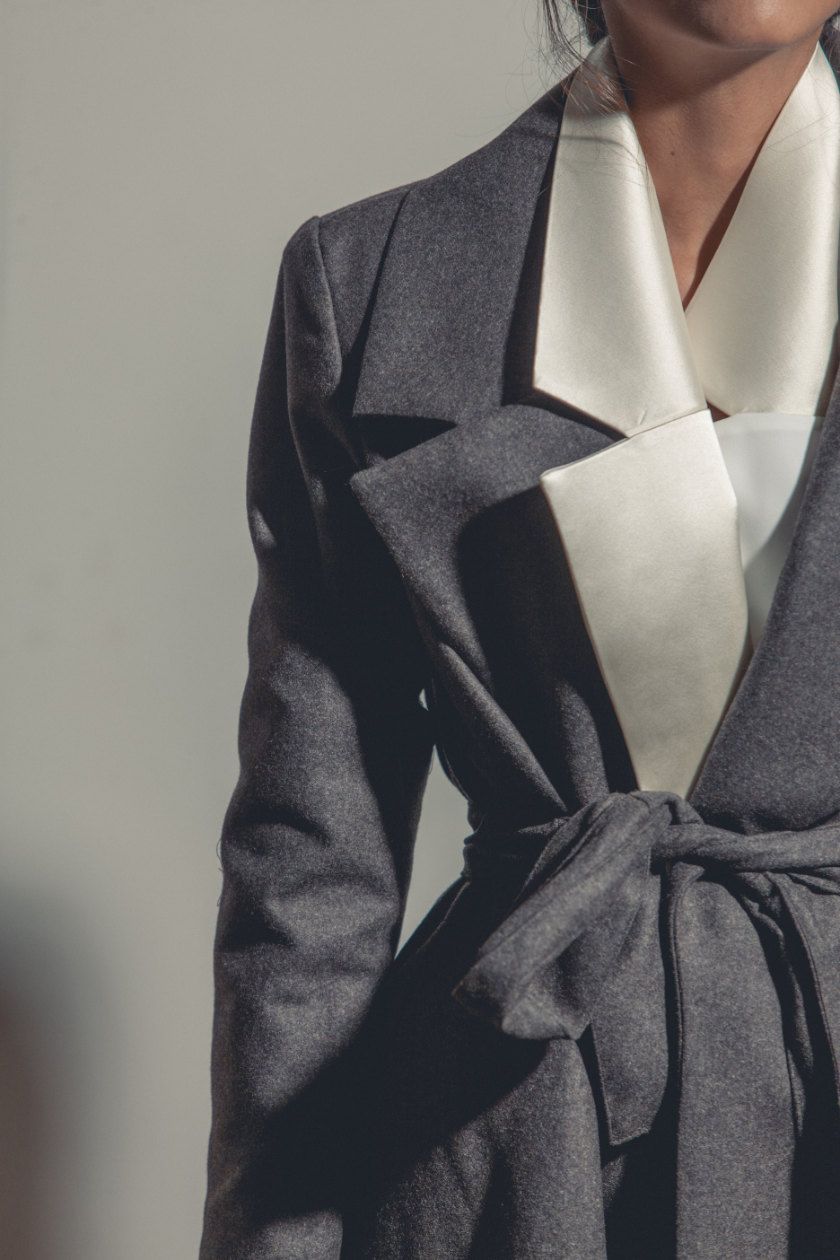 Noora Alharthi’s first collection, autumn–winter 2017
Noora Alharthi’s first collection, autumn–winter 2017
What inspired your collections?
My first collection—autumn–winter ’17—was launched in Jeddah. The suits and dresses were made of wool and heavy fabrics. I ordered some of the fabrics online from Spain and others I found here in the local market. Some pieces were tailored and for others I did layering. I focused on black, white and beige. The photo shoot was done in London to fully reflect the look and feel of the collection. I had a lot of positive feedback and that encouraged me to launch my second collection in autumn–winter ’18. It was also launched in Jeddah and then shown at London Modest Fashion Week. I used men’s fabrics. My aim was to create classic and timeless pieces and so I used classic colours like beige and white. Actually, with men’s fabrics, there aren’t so many colour options. I got wonderful feedback from London Modest Fashion Week. Many bloggers approached me and wanted to collaborate. The third collection—spring–summer ’19—was launched in Riyadh. Because it was a summer collection, I used brighter colours. I’m working now on my fourth collection, which will be launched at the end of the year. Women really love the suits and I’ve begun to design long coats which can be worn instead of abayas. I call it a ‘coataya’. It’s a coat but is worn as an abaya. It’s very light and you can wear it to work, even in summer.
All my collections are made in Saudi Arabia. I’m very much a hands-on designer. To design a well tailored suit, there’s a lot of work that needs to be done. It requires a lot of time, work and effort. I do one collection a year. Usually designers do two, but I don’t have time. I do almost everything myself so it’s a lot of work. I can’t follow seasons. For now, I do whatever I can.
continued below
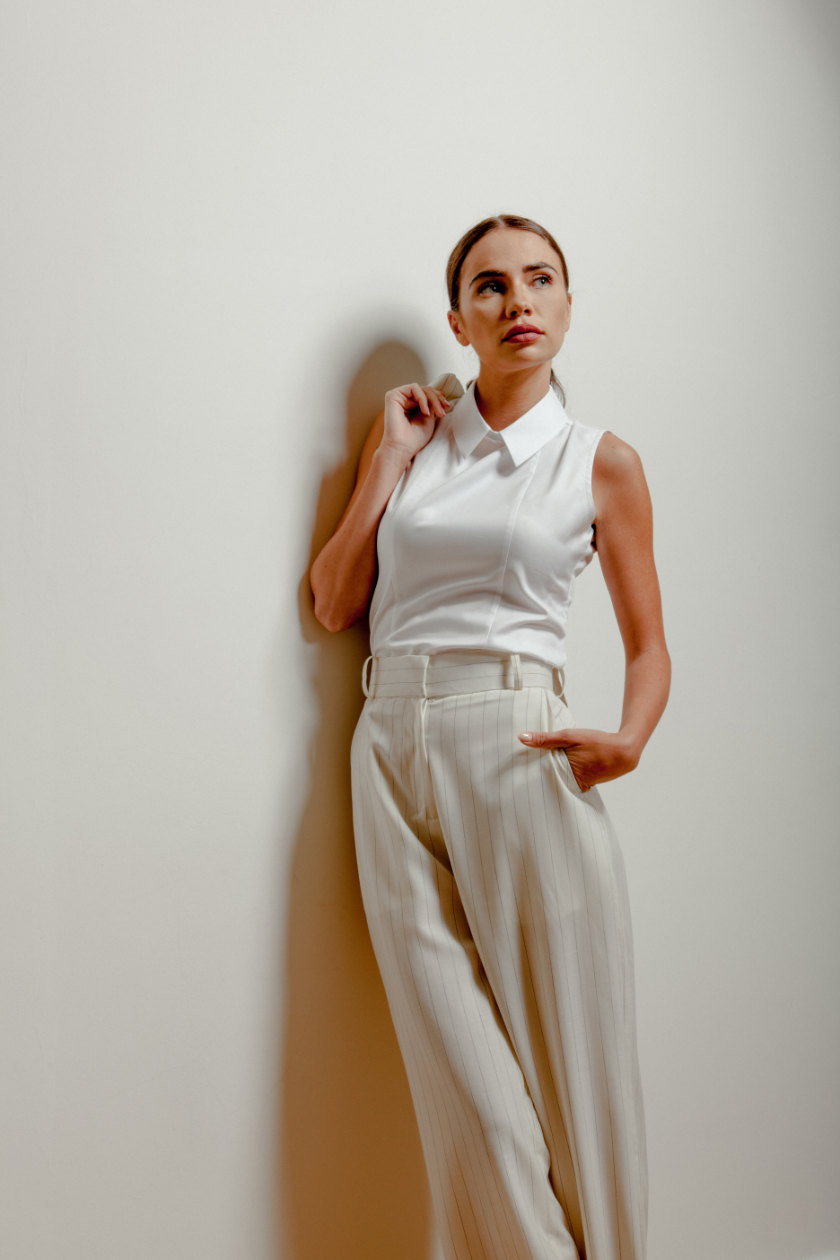
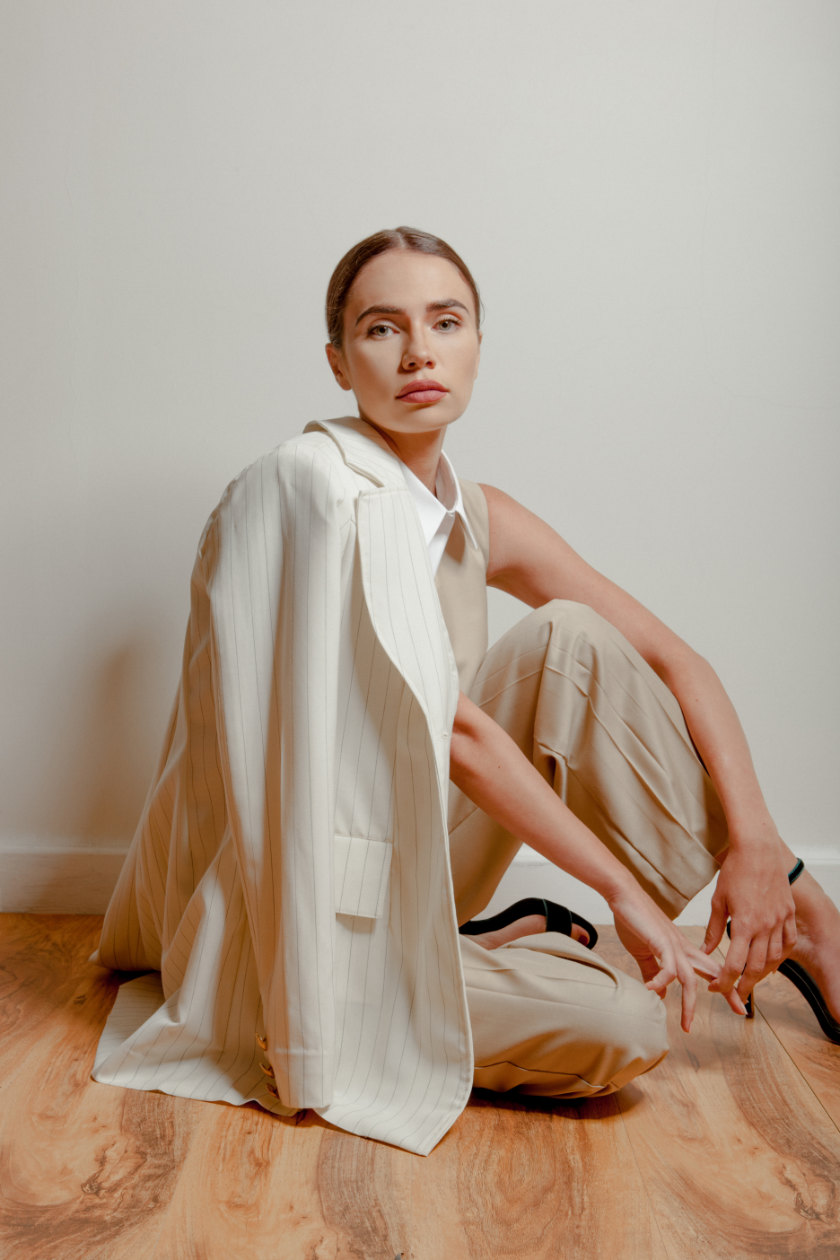
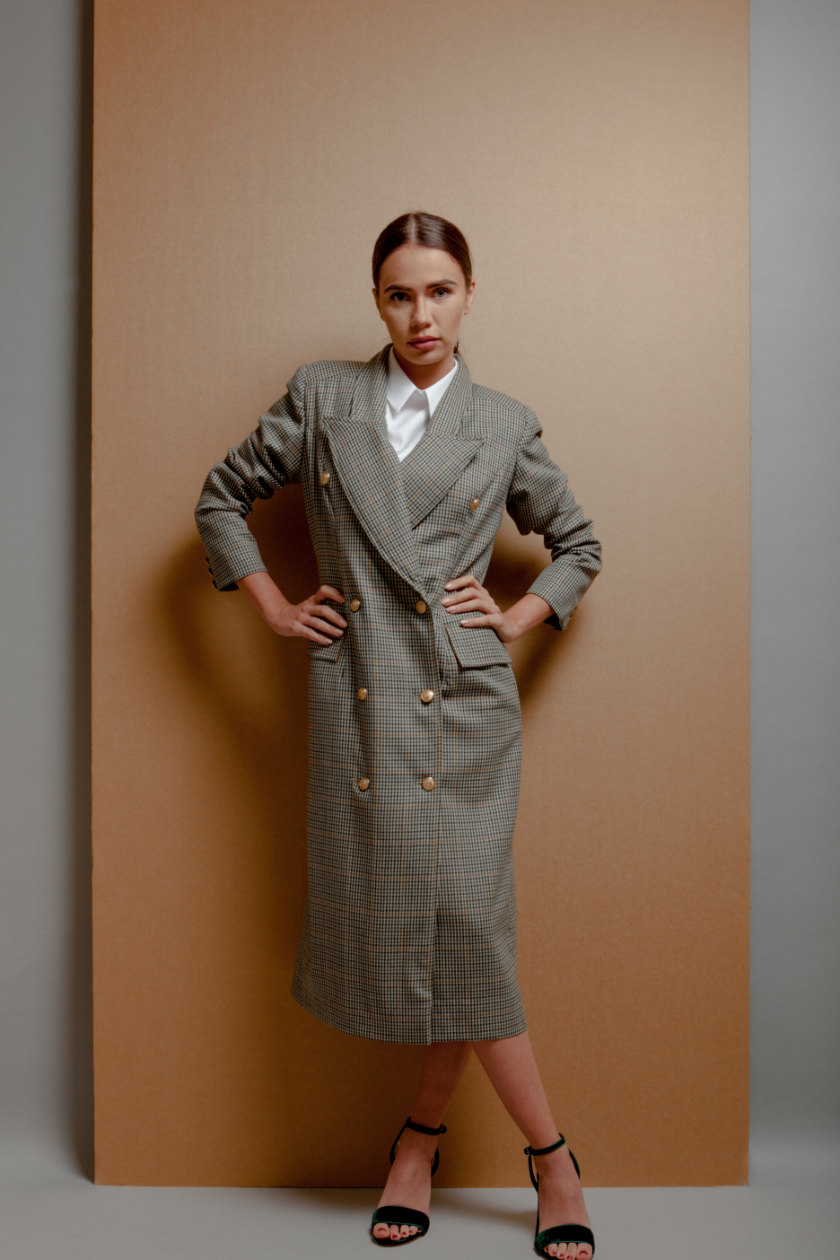 From the second collection, autumn–winter 2018
From the second collection, autumn–winter 2018
Where do you get your ideas?
I often get my ideas at night before sleeping. I have a notebook and pencil at my bedside, and I note things down so I don’t forget them in the morning. I also get ideas from the work of other designers. Thom Browne and Martin Margiela are two of my favourites.
What have been some of the challenges you’ve faced?
Actually, the entire process has been very challenging. It’s not difficult to create a brand, but it’s very difficult to generate and maintain brand awareness. Given the competition from all the well known international labels here in Saudi Arabia, it’s not been easy to persuade Saudi women to consider buying a local ready-to-wear brand. That’s perhaps been the biggest challenge—sticking to the brand’s æsthetic and being able to stand out from others in what is an extremely competitive industry.
Who are your customers?
Most of my orders come from Saudi Arabia. Some people have suggested I should go to New York or Dubai to market my products, but I prefer to stay here and do everything from here. I would also like to mention a blogger in Riyadh, Reem al-Gobaisi, who is one of my most loyal customers. She has bought many pieces from my collections. When I design, I think of a woman who wants clothes that are timeless, comfortable, luxurious, and classic—something you can always go back to and wear—even years later.
How has the fashion industry evolved in Saudi Arabia since you began?
Everything is changing. In the beginning, it was hard. You didn’t know where to go or whom to approach. Today, there’s a lot of support for local designers and that’s a good sign for the future. Fashion design isn’t easy. You have to be confident and love your work because it’s a very competitive industry. •
Related articles hand-picked by our editors
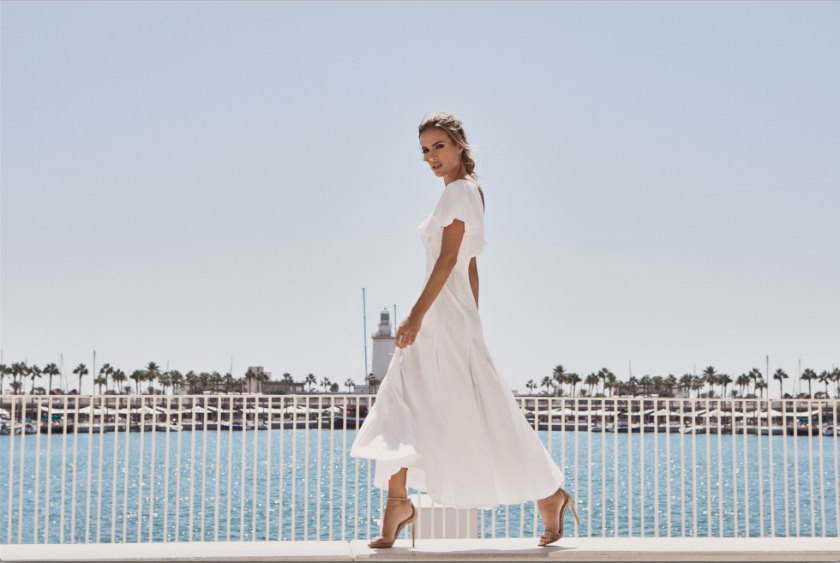
Making luxury ethical
Saudi designer Sadeem Alshehail launched her prêt-à-couture fashion label Sadeem in 2016. Three years on, she’s already widely recognized as a leader in sustainable design. Qurratulain Wahab met up with her to find out more
From the September 2019 issue of Lucire KSA
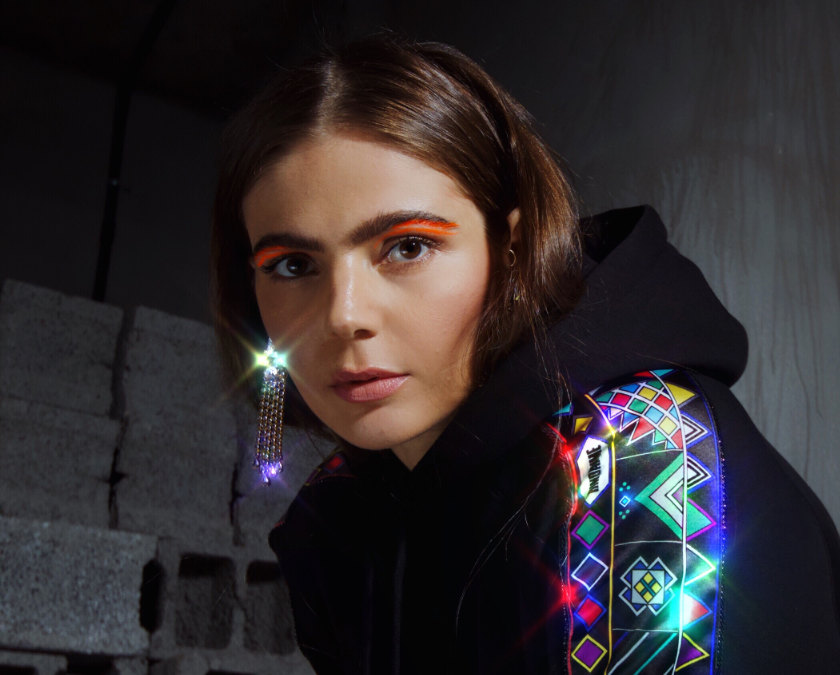
Ready-to-wear with attitude
Hindamme is a contemporary luxury fashion label inspired by the concept of “east meets west”. Qurratulain Wahab spoke with its founder, Mohammed Khoja
From the August 2019 issue of Lucire KSA
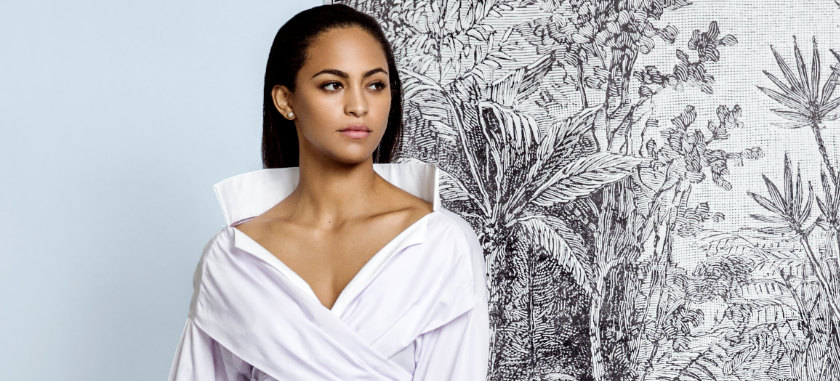
Bridging cultures
Since launching her own label in 2012, Saudi fashion designer, Nora Al-Shaikh has continued to craft unique designs that bridge cultures and have earned her a loyal following both at home in Saudi Arabia and internationally. Qurratulain Wahab visited Nora at her studio in Jeddah
From the June 2019 issue of Lucire KSA
Advertisement
Copyright ©1997–2022 by JY&A Media, part of Jack Yan & Associates. All rights reserved. JY&A terms and conditions and privacy policy apply to viewing this site. All prices in US dollars except where indicated. Contact us here.